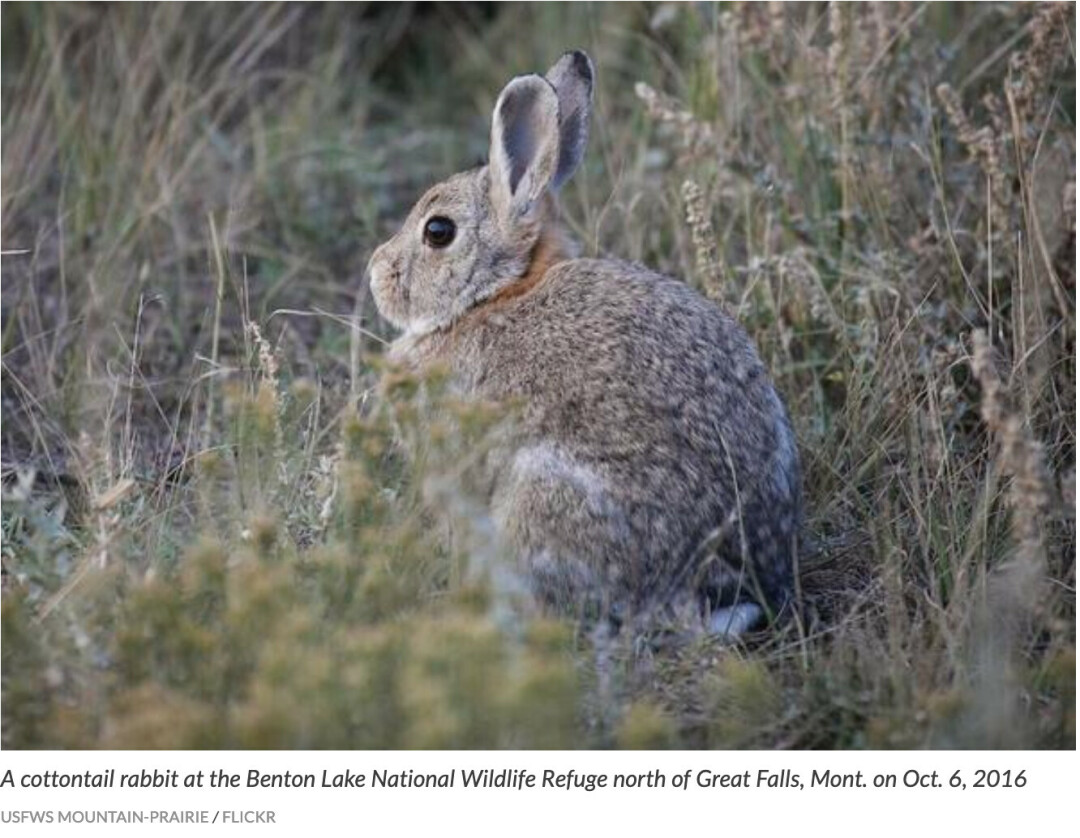Hemorrhagic disease found in wild rabbit in Yellowstone County
Monday Mar. 15th, 2021

A wild cottontail rabbit in Yellowstone County has tested positive for rabbit hemorrhagic disease virus 2 (RHDV2). This positive result is in addition to four feral domestic rabbits that tested positive in Yellowstone County in February. The four feral rabbits were part of a population of about 40 rabbits, all of which are reported to have died. Another single rabbit later tested positive from an area nearby.
RHDV2 is a highly contagious and fatal disease that affects lagomorphs (hares, rabbits and pikas). Although it is considered a foreign animal disease, RHDV2 has been confirmed in North America in domestic and feral rabbits, as well as wild jackrabbits, hares and cottontails. In the United States, RHDV2 has been detected in Ohio, Washington, New York, Wyoming, Colorado, Utah, Nevada, California, Arizona, New Mexico, Florida, Texas, and most recently, Montana.
Montana Fish, Wildlife & Parks wildlife health team investigated this recent outbreak in wild cottontail rabbits in collaboration with the U.S. Geological Survey National Wildlife Health Center and the U.S. Department of Agriculture Foreign Animal Disease Diagnostic Laboratory.
RHDV2 is highly contagious among rabbits, hares and pikas, and can be transmitted by direct contact with infected animals or through contact with infected carcasses, blood, excrement, or contaminated surfaces such as cages, food, water, bedding, clothing or shoes. Scavengers can also move the virus around on the landscape by moving infectious carcasses or carcass parts.
RHDV2 does not infect humans. However, rabbits may die of other diseases that can infect people. People should properly dispose of rabbit carcasses found within Yellowstone County.
- Wear disposable gloves
- Double or triple bag the carcass
- If possible, spray the outside of the bag with a disinfectant
- Place bagged carcass and gloves in a dumpster that will ultimately be taken to a landfill
- Wash hands after handling a carcass
To decontaminate areas touched by a dead rabbit, a bleach-water solution (1/2 cup bleach in 1 gallon of water with a contact time of 5 minutes) is the best disinfectant. Use caution as this solution is corrosive and can damage clothing.
People are important in helping prevent the spread of RHDV2. Do not move rabbit carcasses, other than to properly dispose of them. If you find one dead, please search the area, including outbuildings, to ensure no additional rabbits remain there to infect other rabbits. If feral or wild rabbit carcasses are discovered in an area, report the event to the FWP Wildlife Health Lab (406-577-7880 or 406-577-7882). To report sick or deceased domestic rabbits, contact your local veterinarian or the Department of Livestock (406-444-2976).
| Tweet |